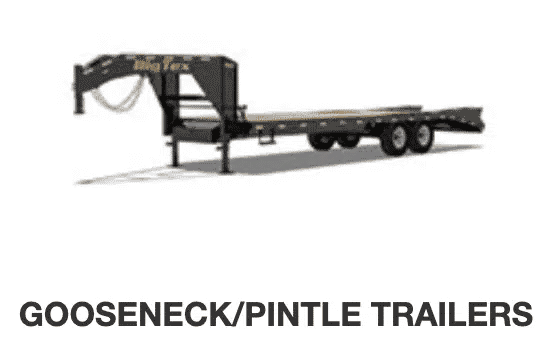Buying a gooseneck trailer can be challenging because almost every trailer manufacturer offers seemingly high-quality trailers and claims they’re the best in the market. What’s more perplexing is that most gooseneck trailers have similar standard features.
When it comes to purchasing gooseneck trailers, you do get what you pay for. That said, the market today is flooded with options, and buying a popular high-priced trailer will not guarantee that it will meet all your hauling needs.
This is because there is no “ultimate” gooseneck trailer since different people and businesses have different requirements. Looking for a one-size-fits-all solution is futile because a new trailer that’s perfect for you might not be a great trailer for someone else, and vice versa.
Gooseneck Trailer Buying Guide
Buying a gooseneck trailer will become less trivial when you know what features manufacturers offer and what features you cannot do without. In this post, we detail all the factors you must consider when looking for a gooseneck trailer and review some great trailers in the gooseneck category to help you find the best gooseneck trailer.
The configuration of a gooseneck trailer dictates its overall performance, expected service span, and ease of use. Here are the factors you must take into account when choosing a gooseneck trailer.
#1 Frame
The first thing you should look at when buying a gooseneck flatbed is the frame — more specifically, the I-beam in the mainframe.
A 12-inch I-beam is considered the industry standard, and most manufacturers offer it on their gooseneck models. However, if you need a heavy-duty trailer to haul extremely heavy loads, it will be worth getting an I-beam with a 19-pound-per-inch I-beam.
#2 Axles
Axle size determines the Gross Vehicle Weight Rating of a hot shot trailer. The GVWR also determines how much weight the trailer can haul.
Most gooseneck trailers in the market come with tandem dual 10,000 lbs. axles and dual wheels. But if you need a trailer with a high loading capacity, buying a gooseneck trailer with heavier axles or upgrading the trailer’s axles is the right way to go.
#3 Finish
Powder coating gooseneck trailers is a relatively recent trend for trailer manufacturers. A powder coat gives the trailer’s exterior a protective, decorative finish. While the coat increases the durability of the trailer, automotive-grade enamel finishes are the better option if you need maximum longevity.
#4 Rustproofing
It’s important to note that powder coating a trailer does not make it rustproof. If you expect to haul your trailer in humid climates around the sea or where it often snows, getting a trailer with a rustproof treatment will protect the trailer from being eaten away by the elements.
#5 Brakes
Reliable brakes are some of the most important parts of gooseneck trailers, which is why most states require all trailers over 3,000 lbs to have an auxiliary brake system.
Modern gooseneck trailers are equipped with one of three brake systems: electric, air, or hydraulic surge.
Hydraulic surge brakes are most common on gooseneck trailers weighing up to 5,500 lbs. These braking systems are easy to set up and perform smoothly, making them the right option if you need a gooseneck trailer to carry fragile loads. However, these systems require regular servicing since they can start to fail.
Electric braking systems are low-maintenance options that you can always rely on. However, equipping a trailer with these can be tricky since they require a brake controller adjusted for the trailer’s weight.
Air brakes are also quite popular, and since the air supply has no limits, the brake pressure will remain consistent even if the system has minor leaks. These systems require frequent monitoring and maintenance.
#6 Decking
You will need to choose the decking material depending on your use case. Most manufacturers offer gooseneck trailers with aluminum, oak, steel, and Southern yellow pine decking.
Rough oak decking is the right option if you intend to carry heavy equipment on your trailer. However, the material does not absorb chemical treatment, making it vulnerable to rotting.
On the other hand, Southern yellow pine is cheap, solid, and absorbs treatment, reducing the chances of rotting. However, the material tends to warp and twist over time.
Steel gooseneck trailers are quite common since the material is durable and dependable. However, steel is prone to rust, so these steel trailers must be inspected regularly to ensure the deck is in good shape.
Aluminum trailers are rust and corrosion resistant and tend to be lightweight, offering improved load capacity and fuel economy. However, these trailers tend to be expensive.
You will need to weigh out the pros and cons of every decking material to find the right option for your trailer.
Conclusion
For more information, check out our best dump trailer review. And if you have ATVs, your gooseneck trailer can also double as your weekend ATV hauler. Check out How to Find the Perfect Trailer to Haul ATVs to help you zero in on the best trailer for you. And, if you’re interested in financing, read our post on No Credit Check Trailer Financing.
